Pichelsteiner (Bavarian Stew)
This post may contain affiliate links. See my disclosure policy.
A thoroughly authentic Pichelsteiner recipe, this famous stew originating in Bavaria, Germany, has been enjoyed for nearly two centuries and even has an annual festival all to its own! Rich in flavor and deliciously filling, this meat and vegetable stew will satisfy both body and soul!
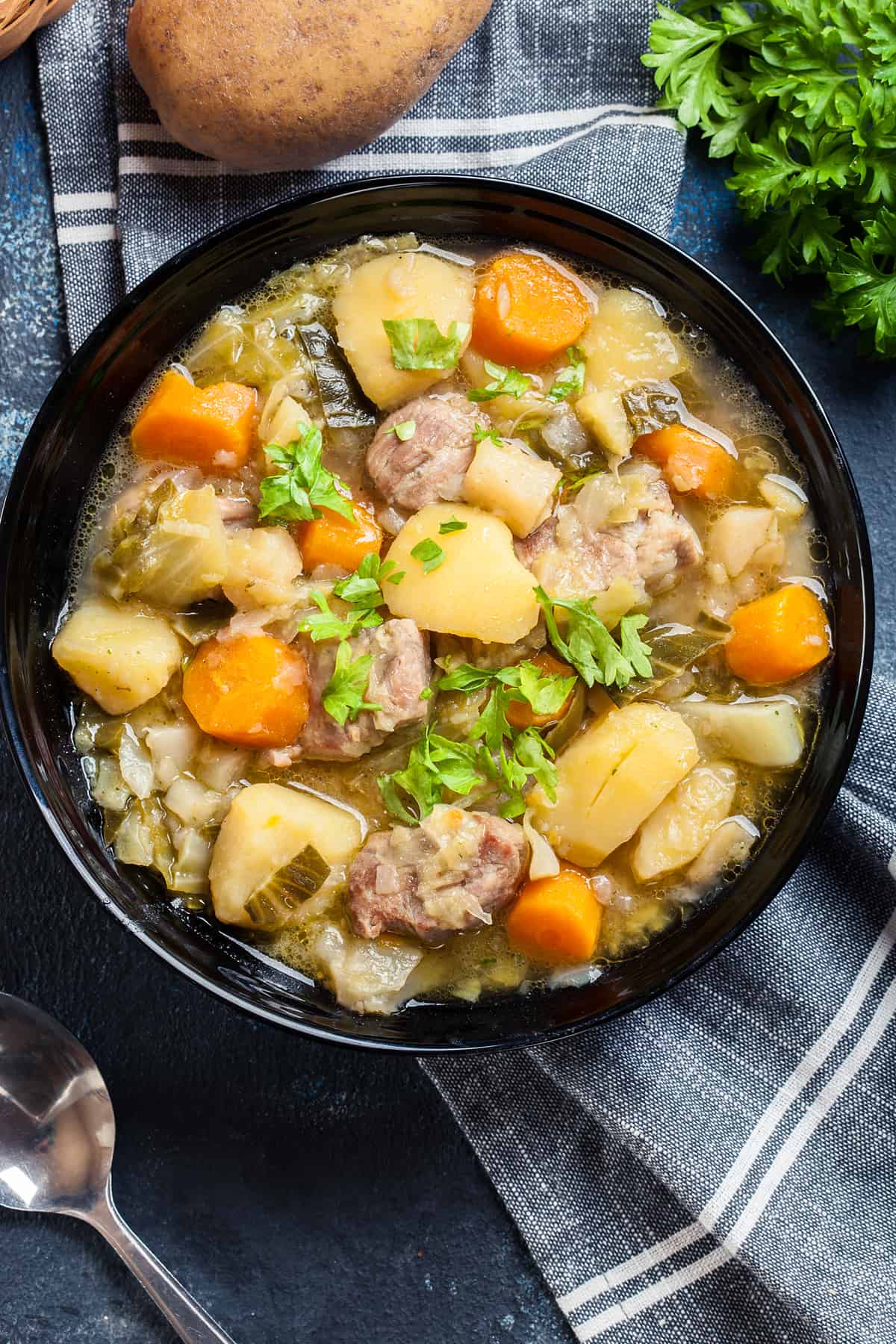
What is Pichelsteiner?
Pichelsteiner to Bavarians is like Irish Stew to the Irish in that its makeup is based on ingredient availability: both stews traditionally incorporated lamb and used whatever vegetables were on hand. In both cases this was cabbage, potatoes, and root vegetables. Pichelsteiner also commonly incorporates leek and celeriac, two ingredients that are very much at the heart of traditional German cuisine and impart what I like to call that “traditional German flavor” that you just can’t replicate without. Today Pichelsteiner (also called Pichelsteiner Eintopf) is commonly made with a combination of meats, specifically beef, pork, and lamb.
Pichelsteiner originated in Bavaria, Germany, and the dish dates back to at least the earlier part of the 19th century, though some believe much earlier. One account says it originated in 1742 when a farmer’s wife had to feed a large military troop passing through. It is said that she only had some leftover meat, cabbage and turnips, which she placed in a large pot (called a “pichel” in former days, hence the possible namesake of the stew), and cooked it over a fire. Another account attributes the creation of the dish to a Bavarian innkeeper, Augusta Winkler, in 1850.
Whichever the case, this hearty stew has remained a beloved Bavarian dish for going on two centuries. The town of Regen in the Bavarian Forest, just an hour north of where my mother was born, has been hosting their annual Pichelsteiner Fest for 150 years. This festival averages around 10,000 visitors each year and features parades, processions, music and, of course, the famous Pichelsteiner stew.
The town of Regen in Bavaria, home of the Pichelsteiner Fest © Axel Drosta | Dreamstime
Pichelsteiner Recipe
To make Pichelsteiner you have the option of cooking it on the stovetop or in the oven (more traditional). If cooking it in the oven you will need a Dutch oven or other oven-proof pot.
- Heat the oil in the Dutch oven over medium-high heat and brown the meat on all sides, working in batches to avoid over-crowding. Transfer the browned meat to a plate and set aside.
- Add the butter and cook the onions until soft and translucent, 4-5 minutes. Add the garlic and cook another minute. Add the leek and cook for 4-5 minutes until softened. Add the carrots and celeriac and cook for another 4-5 minutes.
- Return the meat to the pot along with all remaining ingredients except for the parsley. Cover the pot. If cooking on the stovetop, simmer over low heat for 60-90 minutes or until the meat is very tender. Stir in the parsley and add salt and pepper to taste. Discard the bay leaf. If cooking in the oven: Preheat the oven to 325 degrees F. Place the Dutch oven on the middle rack and bake for 90-120 minutes or until the meat is very tender (don’t stir but add additional broth if needed). Stir in the parsley and add salt and pepper to taste. Discard the bay leaf.
- Serve sprinkled with some parsley. Serve with some crusty bread and/or a green salad.
Pichelsteiner is a great make-ahead dish because it tastes even better the next day.
Enjoy!
For more delicious hearty stews be sure to try our:
- Irish Stew
- Guinness Stew
- Hungarian Goulash
- Doro Wat
- Sega Wat
- Feijoada
- Beef Bourguignon
- Old Fashioned Beef Stew
Save This Recipe
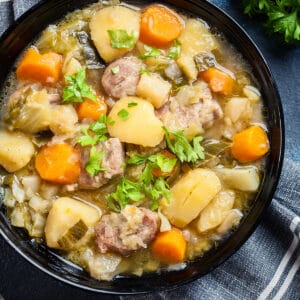
Pichelsteiner (Bavarian Stew)
Ingredients
- 1 tablespoon oil
- 2 pounds stewing meat (combination of beef, pork, and/or lamb) , cubed (stewing cuts e.g., beef chuck, pork shoulder, Boston butt)
- 2 tablespoons butter
- 1 large yellow onion , chopped
- 3 cloves garlic , minced
- 1 leek , chopped and thoroughly rinsed and drained in colander
- 3 large carrots , peeled and cut into 1/2 inch pieces
- 1/2 small celeriac , peeled and diced (about 1 1/2 cups)
- 6-8 medium sized firm yellow waxy potatoes (e.g. Yukon Gold) , peeled and cut into 1 inch pieces
- 1 small savoy cabbage , shredded (about 4 cups)
- 4 cups chicken broth
- 1 1/2 teaspoons salt
- 1/2 teaspoon freshly ground black pepper
- 1 teaspoon crushed caraway seeds
- 1 bay leaf
- 1/4 cup chopped fresh parsley plus more for garnish
Instructions
- Heat the oil in a Dutch oven or heavy pot over medium-high heat and brown the meat on all sides, working in batches to avoid over-crowding. Transfer the browned meat to a plate and set aside.
- Add the butter and cook the onions until soft and translucent, 4-5 minutes. Add the garlic and cook another minute. Add the leek and cook for 4-5 minutes until softened. Add the carrots and celeriac and cook for another 4-5 minutes. Return the meat to the pot along with all remaining ingredients except for the parsley. Cover the pot. If cooking on the stovetop, simmer over low heat for 60-90 minutes or until the meat is very tender. Stir in the parsley and add salt and pepper to taste. Discard the bay leaf. If cooking in the oven (traditional) (you will need a Dutch oven or other oven-safe pot): Preheat the oven to 325 degrees F. Place the Dutch oven on the middle rack and bake for 90-120 minutes (avoid stirring it) or until the meat is very tender (add additional broth if needed). Stir in the parsley and add salt and pepper to taste. Discard the bay leaf. Serve sprinkled with some parsley. Serve with some crusty bread and/or a green salad.Pichelsteiner is a great make-ahead dish because it tastes even better the next day!
Nutrition

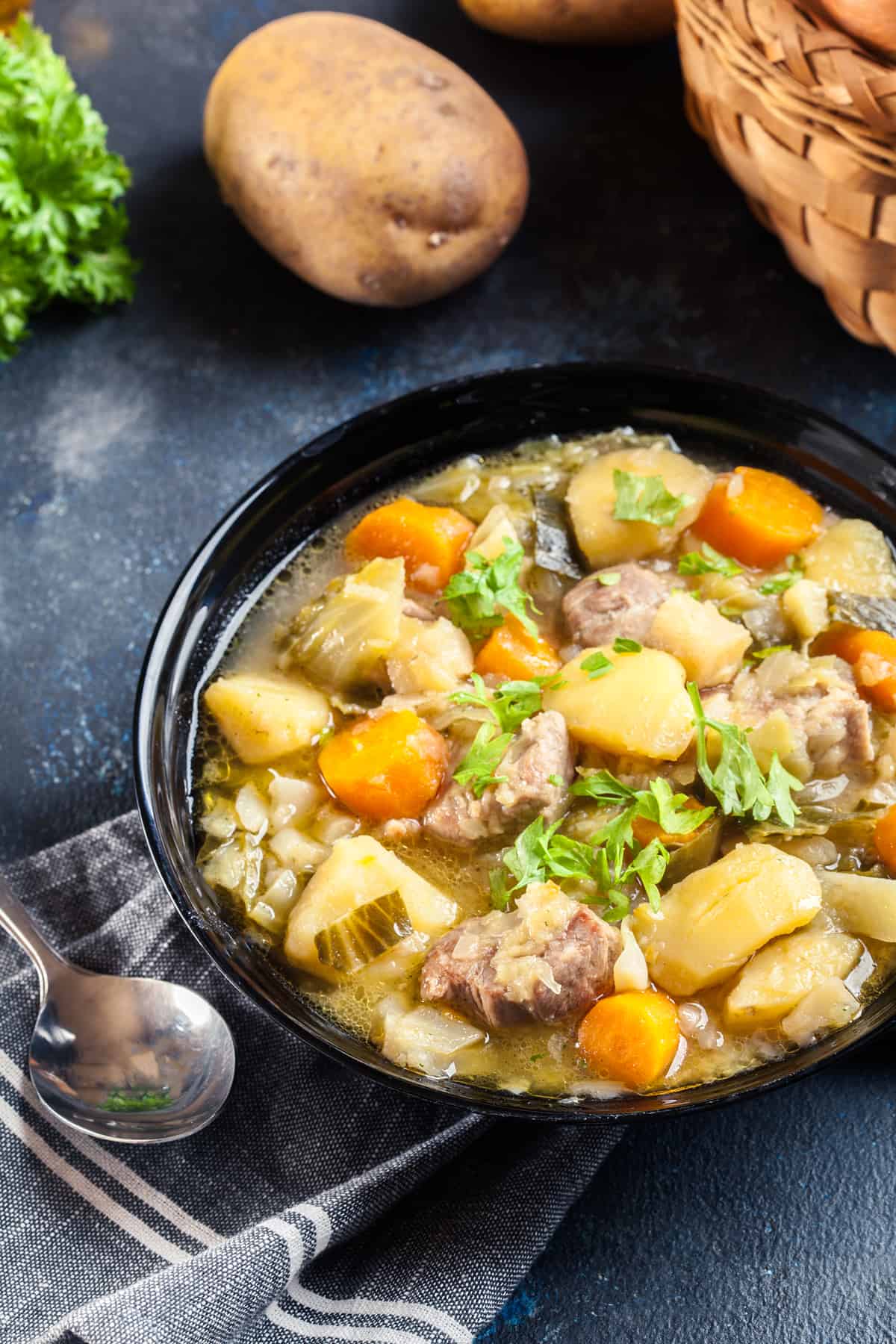
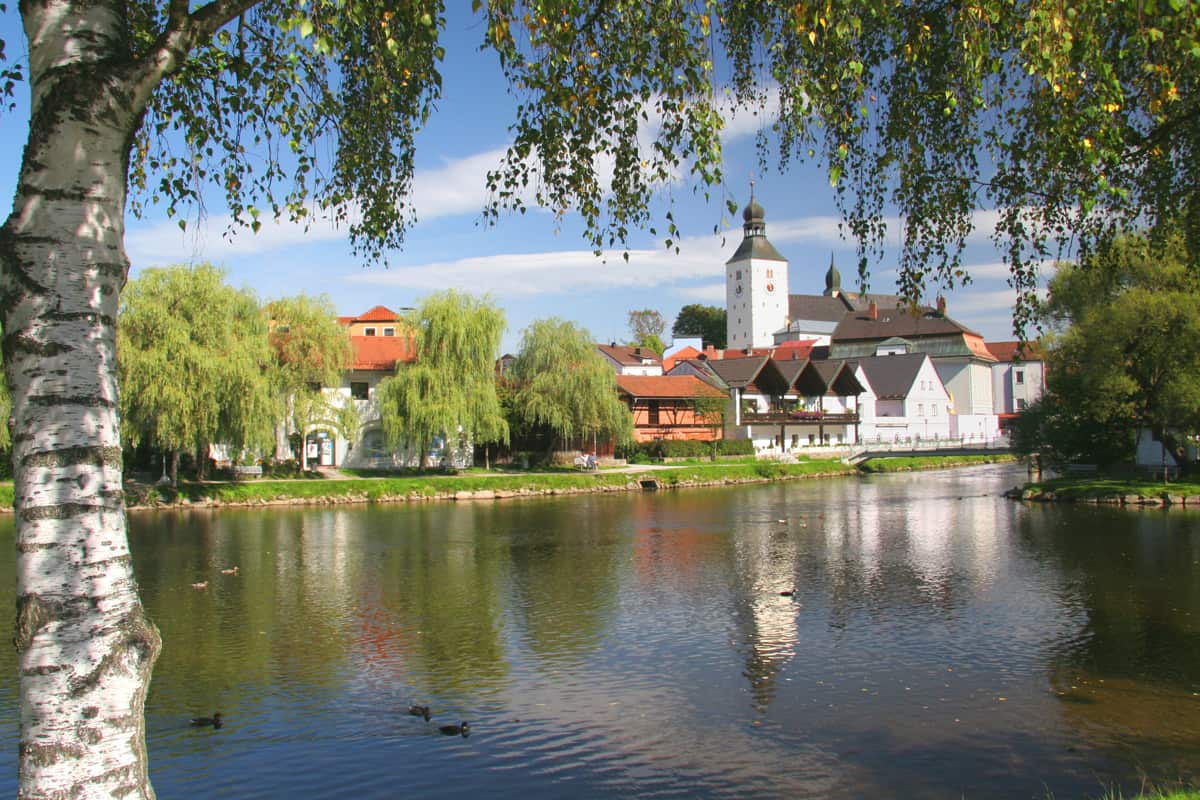
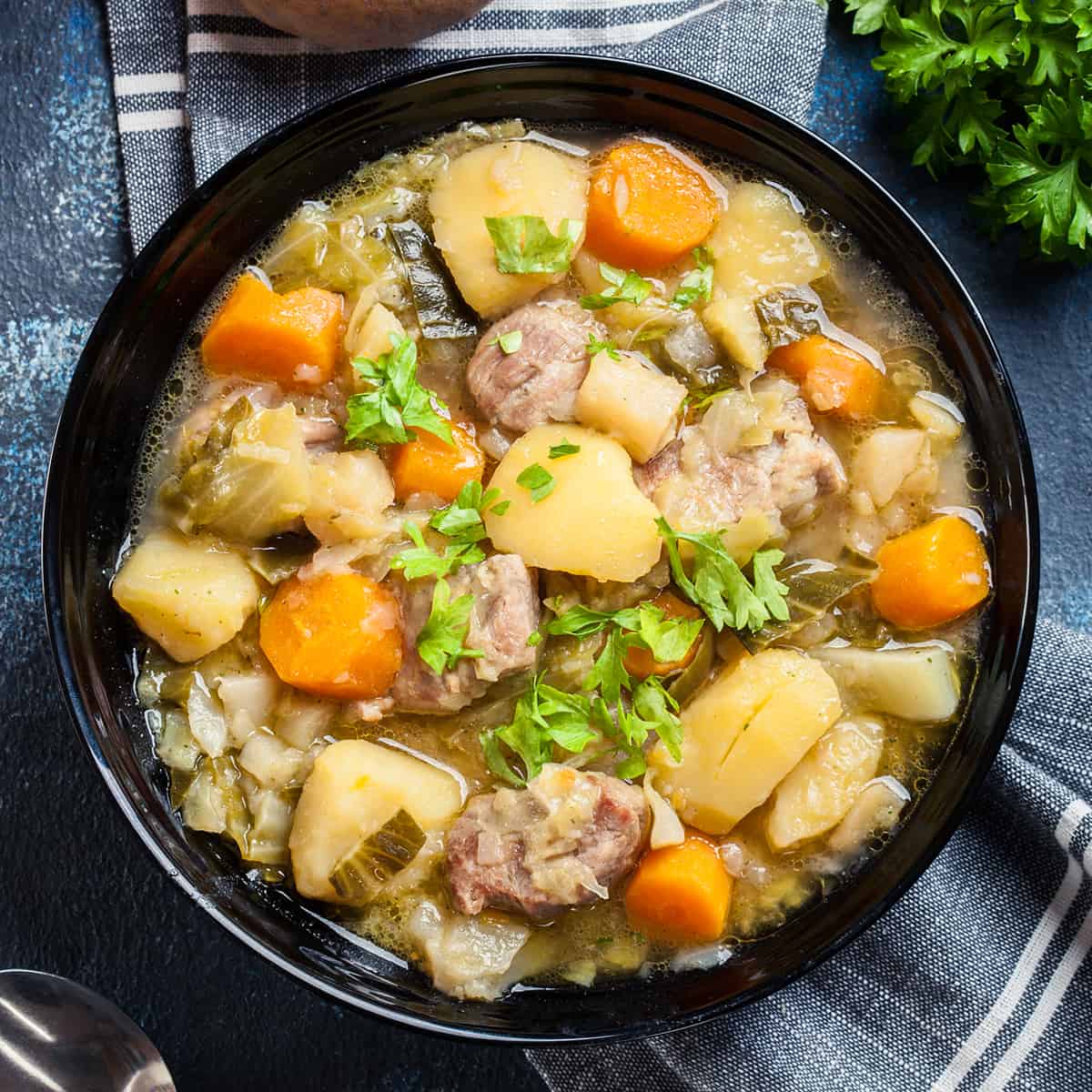


















This was really delicious! Rich flavor and very filling. Will definitely make again.
That’s wonderful, thank you so much Jess!
Very good recipe. My Dad made Pichelsteiner often. I pick up stew meat at Costco and wrap it in
2 lbs. packages. Great for Gulash also. I was blessed with having only good cooks in the family.
You really appreciate that when you get older and have your own family.
We had an abundance of Pfifferlinge, Chanterelle mushrooms,
this season. I added a quart of mushrooms
sauteed in bacon grease to the pichelsteiner.
Happy Thanksgiving Kimberly to you and your family. Tschuess!
I too am from Bavaria right across from Oberndorf in Austria, the birthplace of Silent Night, Holly Night.
Love Pichelsteiner and so does my Family. Some do have different versions. We do not add beets to the stew.
So nice to “meet” you, Susanne! :) And speaking of Stille Nacht, we just visited Joseph Mohr’s gravesite last month in Wahgrain, Austria where he also taught school.
I grew up in Bavaria and we often had Pichelsteiner Eintopf. It always had red beet in it and a healthy portion of fresh chopped parsley
Hi Berta, the red beet sounds like an interesting twist on this classic dish, thanks for sharing.
Kimberly,
How large of a dutch oven do you use?
Hi, I’m using a 6 quart Dutch oven. Happy cooking! :)
I’ve sent to my father-in-law who lives in Bad Reichenhall near Salzburg, AT. I also looked up the festival in Regen and found its website. We are going over sometime this year and will check out Regen if our stay is when the festival takes place. I have been making a lot of stews this winter and will try this one soon.
Which cuts of meat should I use for the stew?
Hi Judith, this stew cooks low and slow so choose stewing cuts like beef chuck, pork shoulder, Boston butt, etc.
Is the sodium amount listed the amount per serving?
Hi Marti, yes it is and that’s if you’re using regular chicken broth. If you’re on a low sodium diet you can also use low sodium chicken broth or cut down on the added salt.